Unexpected Jolts of Children’s Literature
Okay! Been a little while. If you’re just tuning in now, welcome to a series I like to produce on the regular. “Unexpected Jolts of Children’s Literature” is what happens when an adult book discusses children’s literature in some manner. Could be a biography. Could be an offhanded mention in a work of fiction. Could be anything, really.
So sit back, take a breather, and enjoy this round-up of titles that have a tangential approximation to children’s books in some shape or manner.
Weird Girls: Writing the Art Monster by Caroline Hagood

I suppose it was the article in Literary Hub entitled An Ode to Harriet the Spy, the Art Monster of East End Avenue that was what really caught my eye at first. It was there that I read the words of Caroline Hagood saying, “The concept of the art monster, the (historically male) wildly dedicated artist (enabled by his wife typing up his manuscripts and tending to his tots) is not a new concept, but it was officially identified in Jenny Offill’s 2016 novel Dept of Speculation. Offill’s protagonist had wanted to be just such a creative monster before becoming a wife and mother. My book Weird Girls: Writing the Art Monster, looks at my quest to be an art monster despite being a mother of two.” She goes on to explain how, Harriet froom Harriet the Spy is a marvelous example of this. “Fitzhugh captures the intense sensory experience of the obsessive dedication to craft required to be an art monster.” This is best exemplified when Harriet becomes entirely engulfed in writing, “bending so low over her notebook that her long straight hair touched the edges.” In her book Weird Girls, Hagood’s deep dive into the concept of “art monster” may also sound horrendously familiar to any woman who has attempted to tap back into a creative well post-birth. This is, in fact, a book I’d very much like to see.
ADVERTISEMENT
ADVERTISEMENT
The Women Who Invented Twentieth-Century Children’s Literature by Elizabeth West
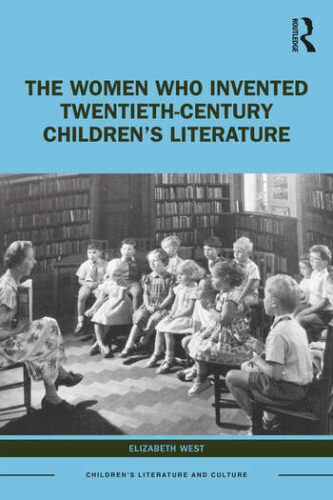
Well, it won’t win for cover design, but it is a rather fascinating concept. Here’s the synopsis for those of you in the know:
“Publishing for children between 1930 and 1960 has been denigrated as a relatively fallow period for creativity and quality, certainly in comparison with the ‘golden ages’ of children’s literature that preceded and succeeded it. This book questions this perception by using archival evidence to argue that the work of what was predominantly a female group of editors, illustrators, authors and librarians (collectively referred to as bookwomen) resulted in many titles which are still considered as ‘classics’ today. The bookwomen reframed ideas about how children’s publishing should be approached and valued and, in doing so, laid the foundations for a subsequent generation of children’s authors and publishers who were to achieve far greater prominence. The key to the success of the bookwomen was their willingness to experiment, the strength of their relationships and their comprehensive understanding of the book production process. By focusing on a selection of women working across all aspects of the book production process, this book demonstrates that, both individually and collectively, women capitalised on their position as ‘other’ to the existing male institutions.”
As someone guilty of discussing the current era of literary output as the new “Golden Age”, I’m intrigued by the wide view this particular book takes. Of particular note is how it’s looking at “editors, illustrators, authors and librarians.” That’s an interesting mix. I love that they’re now seen as a kind of collective. Even today I see people move between these different areas with relative ease. Just add in “bookseller”.
Heart to Heart: A Conversation on Love and Hope for Our Precious Planet by Dalai Lama XIV, ill. Patrick McDonnell
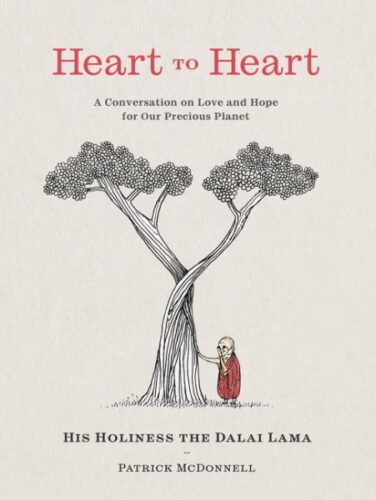
Oh, admit it. The minute McDonnell did that book on Jane Goodall, you knew it was only a matter of time before he made his way to the Dalai Lama, right? Their spheres of influence are awfully close, after all. I’m just surprised I didn’t think of this one myself. Here’s the description of the book:
“At the Dalai Lama’s residence in Dharamsala, India, an unusual visitor has arrived. His Holiness interrupts his morning meditation to greet a troubled Giant Panda who has travelled many miles to see him. Welcoming him as a friend, His Holiness invites the Panda on a walk through a cedar forest. There in the shadow of the Himalayas, surrounded by beauty, they discuss matters great and small . . .
With a galvanizing message about the future of our planet—text by His Holiness accompanied by McDonnell’s masterful illustrations—Heart to Heart calls for a Compassionate Revolution, reminding us that “we are indeed all members of a single family, sharing one little house.” Told with whimsy, wisdom, and warmth, this beautiful book is deceptively simple in its approach and all the more powerful for it, as it elegantly and decisively conveys a message of joy, hope and change.”
Literally, if publisher Harperone hadn’t come up with this idea first, the universe would have simply produced it out of the ether itself. It was meant to be.
Relations: An Anthology of African and Diaspora Voices edited by Nana Ekua Brew-Hammond
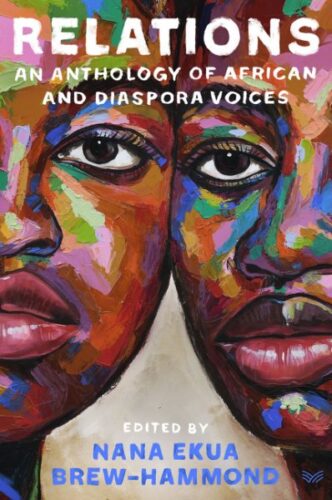
Does the name “Nana Ekua Brew-Hammond” mean anything to you? Perhaps it sounds somewhat familiar. If so, you may remember last year’s stunner of an informational picture book, Blue, which delved deep into the international history of a color. That author returns to us on the adult side of things this year with this multi-starred anthology. Here’s the description:
Relations punctures the human illusion of separation. New and established storytellers reshape the narratives that divide and subjugate, revealing the truth of our shared humanity despite differences in language, identity, class, gender, and beyond. This vital anthology is Nana Ekua Brew-Hammond’s striking vision of a meeting place of perspectives, centered in the African and diaspora experience.
In a post-Black Panther world, it is an urgent and welcome embrace of the diversity of Blackness. A refreshing collection of genre-spanning literature, it offers a vibrant meditation on being—inviting connection across real and imagined borders, and celebration of the most profound relations.
And yes. I’ve already bought many a fine copy for my own library system.
Tiny Feet: A Treasury for Parents: An Anthology, intro by Lauren Child
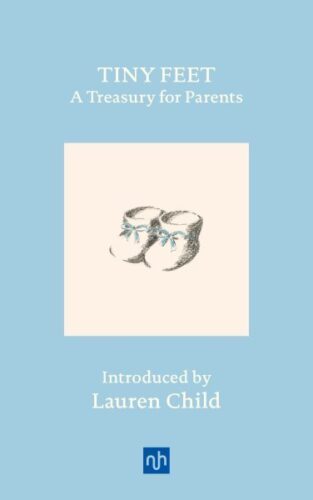
New parents are, to the publishing industry, a veritable goldmine. Books, naturally, are some of the first things they gravitate towards when they hear the happy news that a baby is on its way. And certainly board books and parenting books that outline precisely what kind of fruit or vegetable your baby resembles any given week are the easiest titles to sell. Yet I for one like the slightly odder far. The kind of stuff you’d find in Tiny Feet, seen here. Lauren Child is, of course, the creator of the Charlie and Lola books, and in this title she offers a deep dive into parenting ideals over the centuries (four of them, to be precise). Here’s the description:
“Children are a wonder, a blessing, a miracle, and everyone has an opinion on how we should raise them. From novelists to pediatricians and from modern parenting “experts” to child psychologists, Tiny Feet is the first anthology of its kind, showcasing a range of the most influential writing about children over the past four hundred years. Published chronologically, the extracts featured in this delightful compendium show the extent to which some of our attitudes have changed while others remain absolute, and remind us of the joy that children have always brought to our lives.
Contributors include: Erik H. Erikson on shame and guilt; Marvin J. Gersh on how to raise children in your “spare time”; Naomi Stadlen on how parenting books undermine parenting by reducing it to a number of essential tasks; and Donald Winnicott on “the good-enough mother.”
Plus: memoir, fiction, and further opinion from Daniel Burgess, Jean-Jacques Rousseau, Johann Heinrich Pestalozzi, Isabella Beeton, Charles Darwin, Robert Louis Stevenson, James Sully, Maria Montessori, Bertrand Russell, Margaret Mead, Jean Piaget, Harry F. Harlow, Benjamin Spock, Marvin J. Gersh, Toni Morrison, Lydia Davis, Alison Gopnik, Giuseppina Persico, Cleon C. Mason, Bernardine Evaristo, Ella Cara Deloria, John B. Watson, and Rosalie Rayner.”
Why Fathers Cry at Night: A Memoir in Love Poems, Recipes, Letters, and Remembrances by Kwame Alexander
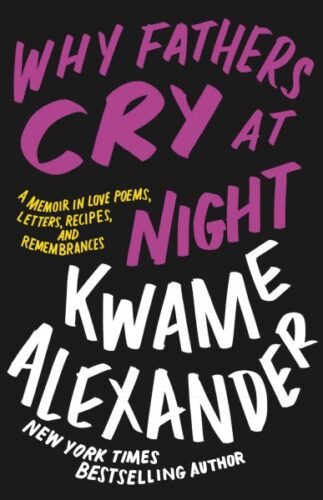
Not due out until late May and already my library system has five holds on this memoir from none other than Kwame Alexander himself. Not being terribly familiar with his adult oeuvre, I can’t say whether or not this is the first book he’s done for the grown-up sphere. It is, however, certainly his first straight up autobiographical text. One that I’d be curious to see, based on this description:
“In a powerfully intimate and non-traditional (or “new-fashioned”) memoir, Kwame Alexander shares snapshots of a man learning how to love. He takes us through stories of his parents: from being awkward newlyweds in the sticky Chicago summer of 1967, to the sometimes-confusing ways they showed their love to each other, and for him. He explores his own relationships—his difficulties as a newly wedded, 22-year-old father, and the precariousness of his early marriage working in a jazz club with his second wife. Alexander attempts to deal with the unravelling of his marriage and the grief of his mother’s recent passing while sharing the solace he found in learning how to perfect her famous fried chicken dish. With an open heart, Alexander weaves together memories of his past to try and understand his greatest love: his daughters.
Full of heartfelt reminisces, family recipes, love poems, and personal letters, Why Fathers Cry at Night inspires bravery and vulnerability in every reader who has experienced the reckless passion, heartbreak, failure, and joy that define the whirlwind woes and wonders of love.”
And Put Away Childish Things Away by Adrian Tchaikovsky
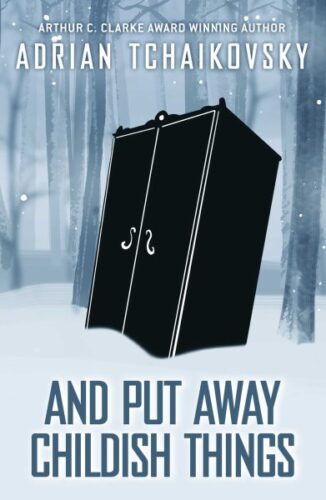
I’m sorry. I’m sure this is an excellent book and all, but if we’re going to show the dark side of a Narnia-esque land, it’s hard to even discuss that without first talking about the book that haunts my dreams even until this day, The Riverman by Aaron Starmer. Heck, I suppose you could even say that Philip Pullman’s been wrestling with Narnia for years himself, so an adult fantasy novel that does much of the same does start to feel a little samey. Still, Tchaikovsky is considered to be a fun writer, and the description of this is enjoyable. Extra Bonus Points for creating the name of a faux beloved children’s writer and calling her, “Mary Bodie.” It just sounds read. Here’s the plot:
“Harry Bodie has a famous grandmother, who wrote beloved children’s books set in the delightful world of Underhill. Harry himself is a failing kids’ TV presenter whose every attempt to advance his career ends in self-sabotage. His family history seems to be nothing but an impediment.
An impediment… or worse. What if Underhill is real? What if it has been waiting decades for a promised child to visit? What if it isn’t delightful at all? And what if its denizens have run out of patience and are taking matters into their own hands?”
Filed under: Unexpected Jolts of Children's Literature
About Betsy Bird
Betsy Bird is currently the Collection Development Manager of the Evanston Public Library system and a former Materials Specialist for New York Public Library. She has served on Newbery, written for Horn Book, and has done other lovely little things that she'd love to tell you about but that she's sure you'd find more interesting to hear of in person. Her opinions are her own and do not reflect those of EPL, SLJ, or any of the other acronyms you might be able to name. Follow her on Twitter: @fuseeight.
ADVERTISEMENT
ADVERTISEMENT
SLJ Blog Network
One Star Review, Guess Who? (#202)
Exclusive: Giant Magical Otters Invade New Hex Vet Graphic Novel | News
Parsing Religion in Public Schools
Take Five: LGBTQIA+ Middle Grade Novels
ADVERTISEMENT







